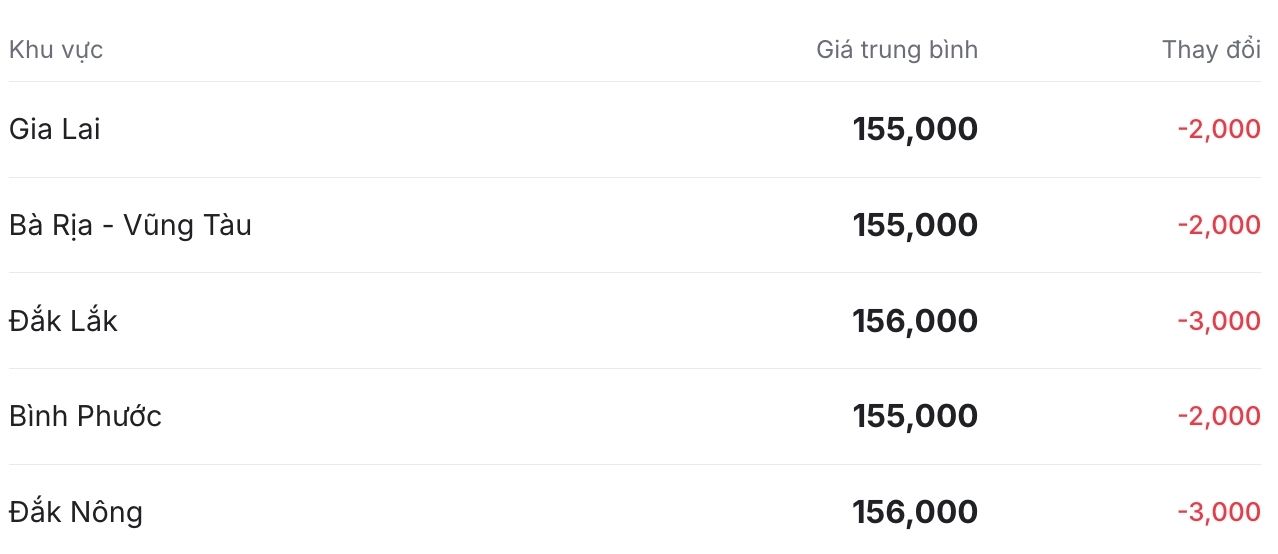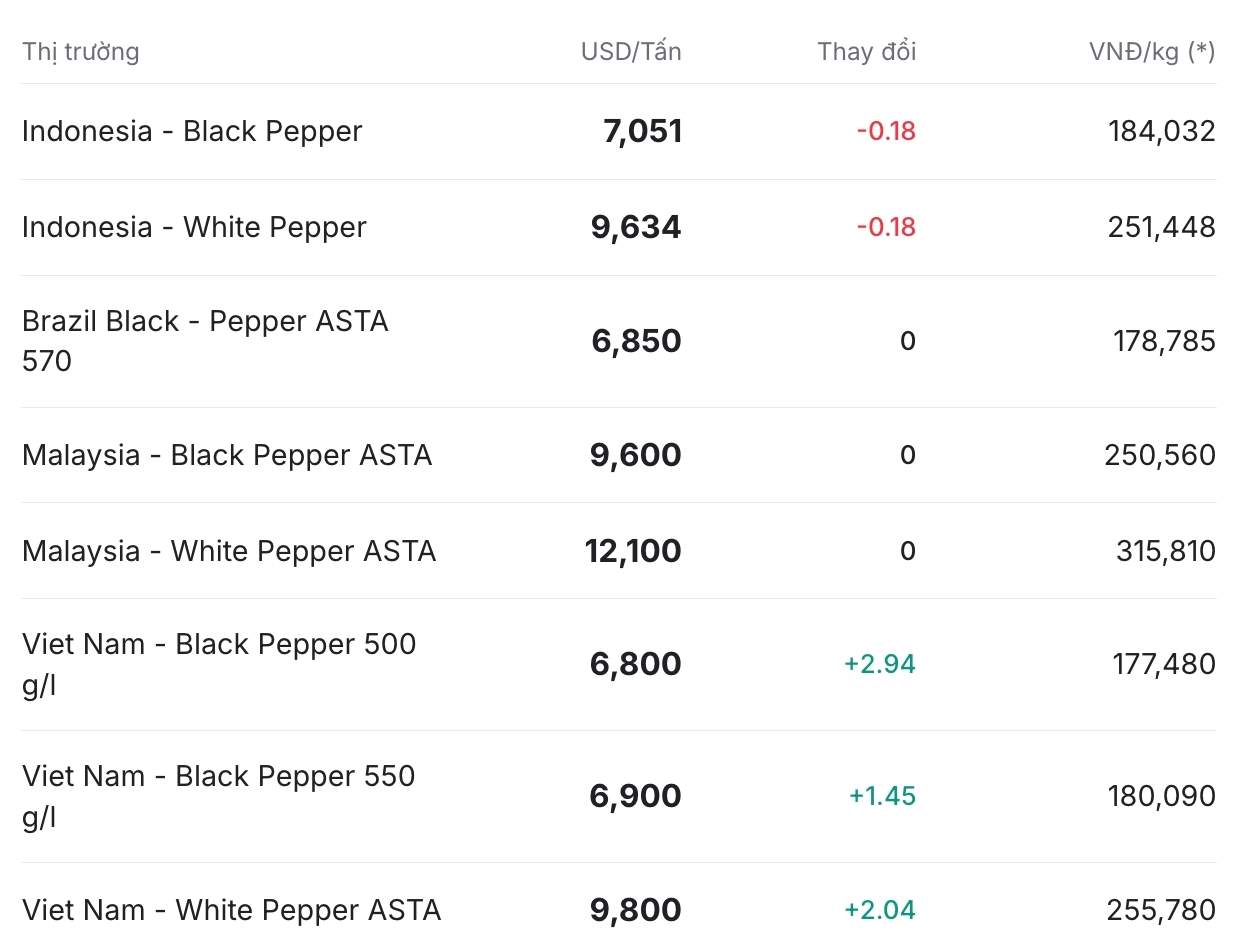Domestic pepper prices drop sharply at the end of the week
On April 18, the domestic pepper market simultaneously recorded a sharp adjustment of VND 2,000 - 3,000/kg compared to the previous trading session. This development comes after a period of domestic pepper prices tending to increase slightly due to scarce supply after harvest.
In the Central Highlands provinces - which account for a large proportion of national pepper output, pepper prices have now turned to decrease significantly.
In Dak Lak and Dak Nong - two areas that have recorded higher prices in recent days - are also adjusted to 156,000 VND/kg, down 3,000 VND/kg.
Meanwhile, Gia Lai, Binh Phuoc and Ba Ria - Vung Tau are trading at 155,000 VND/kg, down 2,000 VND.
On average, domestic pepper prices today are fluctuating at about 155,400 VND/kg. This is the lowest price in the past week, marking a remarkable decline right after the harvest was almost complete nationwide.

World pepper prices: Coming sideways, Vietnamese pepper leads the increase
As of 11am on April 18, the world pepper market recorded a clear differentiation between regions. While pepper prices in Indonesia and Malaysia are mostly flat or slightly decreasing, Vietnamese pepper suddenly increased sharply, becoming a bright spot in the global basket of goods.
Vietnam's 500g/l black tea is traded at 6,800 USD/ton, up to 2.94%. The 550g/l variety also increased by 1.45% to 6,900 USD/ton. Notably, Vietnamese white pepper skyrocketed to 9,800 USD/ton, up 2.04% compared to the previous session. This is the strongest increase among pepper types of key exporting countries.
In contrast, Indonesia's black pepper and white pepper decreased slightly by 0.18%, to 7,051 USD/ton and 9,634 USD/ton, respectively. Meanwhile, pepper products of Malaysia and Brazil did not record any changes compared to yesterday.

The driving force for Vietnamese spending to increase sharply comes from the import demand of some major markets returning after a period of stagnation, along with the quality of new crops being well appreciated. On the other hand, the slight increase in the USD makes Vietnamese pepper more attractive compared to high-priced countries such as Malaysia or Indonesia.
Assessment and forecast
Sudden rains at the beginning of the season in key areas have caused many obstacles in the pepper harvest process. Rain not only makes pepper moist, reducing quality, but also makes drying difficult, prolonging the processing time after harvest.
The delay in harvesting also leads to a situation where the ripe shoots are full, causing a loss of output. Not only affecting selling prices, pepper growers also have to spend more effort to collect and re-classify fallen pepper - which is no longer of high quality as at first.











